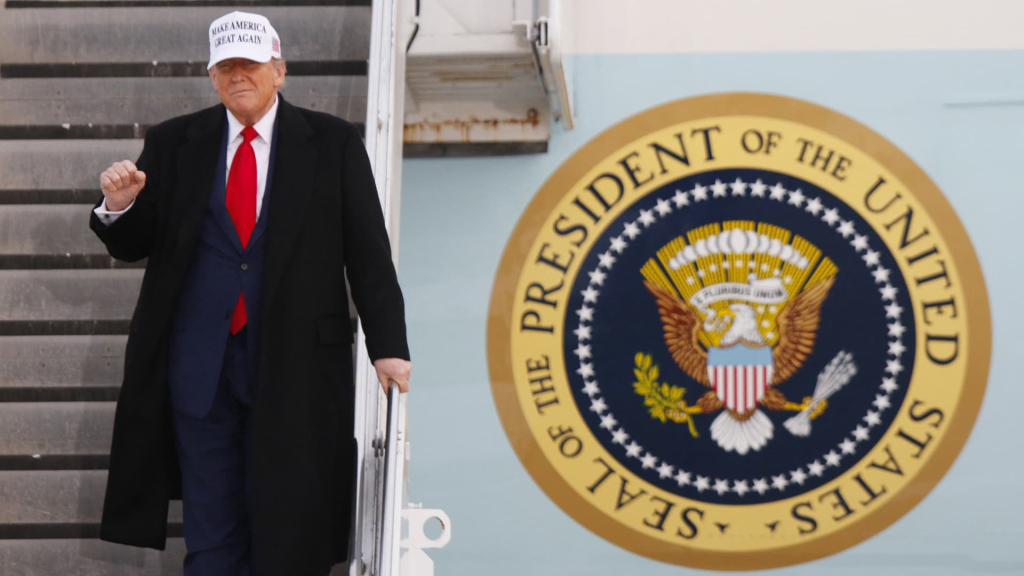The upcoming Group of Seven (G7) summit in Canada is set to focus on ongoing trade instability as well as tensions stemming from conflicts in Ukraine and the Middle East. The meeting will convene leaders from the largest advanced economies to navigate these pressing issues.
With many of the challenges rooted in the economic and foreign policy decisions emanating from the White House, allies are eager to understand whether President Donald Trump will align with them or diverge during critical geopolitical deliberations.
The G7 includes the United States, the United Kingdom, Canada, France, Germany, Italy, Japan, as well as representatives from the European Union and a range of invited nations including Australia, Brazil, Mexico, Indonesia, Ukraine, South Africa, and South Korea. This year’s summit aims to forge a consensus on tackling significant global economic challenges and coordinating responses.
However, the internal dynamics of the group present a challenge, particularly with Trump imposing a series of trade tariffs that threaten to escalate into a global trade conflict, with the exception of the U.K., which recently finalized a trade agreement with the U.S.
As Trump’s temporary moratorium on “reciprocal” tariffs remains in place, Japan and the EU are racing against a July 9 deadline to negotiate deals. Should negotiations fail, increased tariffs will be reinstated, which presently stand at 10% due to Trump’s interim adjustments.
Canada has been particularly affected, facing a 25% tariff on automobiles and a 50% levy on steel and aluminum imports. Additionally, products not covered by the USMCA trade deal, which includes Mexico, are also subjected to tariffs. In response, Canada enacted its own 25% tariff on U.S. imports, although some have been suspended to safeguard domestic industries.
Trade negotiations on the agenda
During the summit, informal discussions between Trump and leaders keen on forming trade agreements are anticipated. Nonetheless, prospects for significant breakthroughs remain uncertain.
Canada, hosting the summit, appears to strive for a unified front, opting not to issue the customary public communique outlining collective efforts to address shared challenges.
This decision may reflect a desire to avoid a repeat of the discord that marked the 2018 summit in Canada, where Trump withdrew U.S. support for a collaborative statement. The last time Trump participated actively in a G7 meeting was in France in 2019.
“The G7 was formed fifty years ago to enable advanced-economy democracies to align on shared economic and geopolitical challenges. Yet, what occurs when the source of instability arises from within the G7 itself? This is the dilemma facing leaders as they convene this week in Kananaskis,” remarked John Lipsky, chair of international economics at the Atlantic Council, in a research note ahead of the summit.
According to Lipsky, Trump is likely to rally the group against China’s economic tactics. However, other leaders may counter that such cooperation would be more effective without tariffs impacting allies.
Significant global issues on the table
Additionally, there are critical topics such as support for Ukraine, alongside the need to address the ramifications of Russia’s potential resurgence, with Trump indecisive regarding imposing further sanctions against Moscow. Compounding these issues is the escalating situation in the Middle East, marked by violent clashes between Israel and Iran resulting in substantial casualties that raise broader economic concerns.
The U.S., a steadfast ally of Israel, intervened to intercept Iranian missiles, while global calls for de-escalation in the region have intensified.
This complex backdrop of tariffs and international conflict is expected to produce intense discussions during the summit, particularly given Trump’s unpredictable and often contrary disposition, analysts suggest.
Reflecting on Trump’s previous behavior at the 2018 summit, analysts from the Center for Strategic and International Studies characterized it as a “reality TV show.” They caution that, with Trump’s trade conflicts still very much alive and targeting other attendees, this meeting could escalate even further. To mitigate potential fallout, the CSIS noted the necessity for world leaders to recognize and address Trump’s concerns regarding U.S. global leadership.
Historically, G7 members have sought to broaden their discussions to include technological advancements, public health, and major conflicts beyond the group’s traditional focus. As geopolitical tensions paralyze many international institutions today, there is a pressing need for unified action.


























